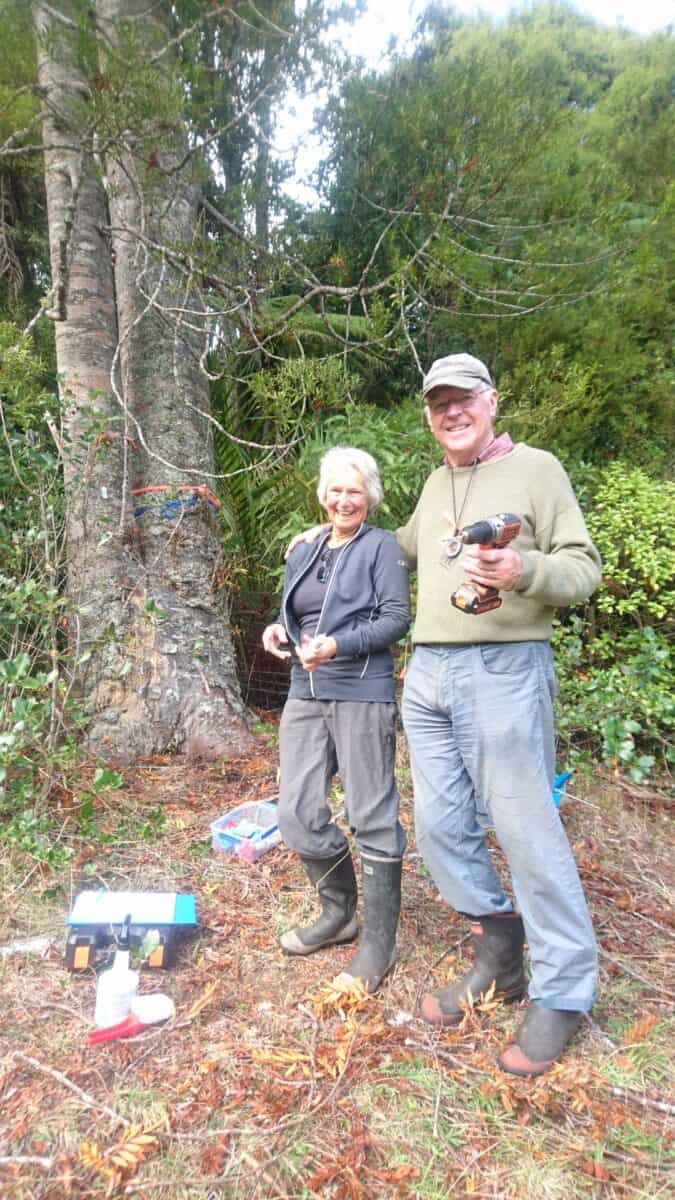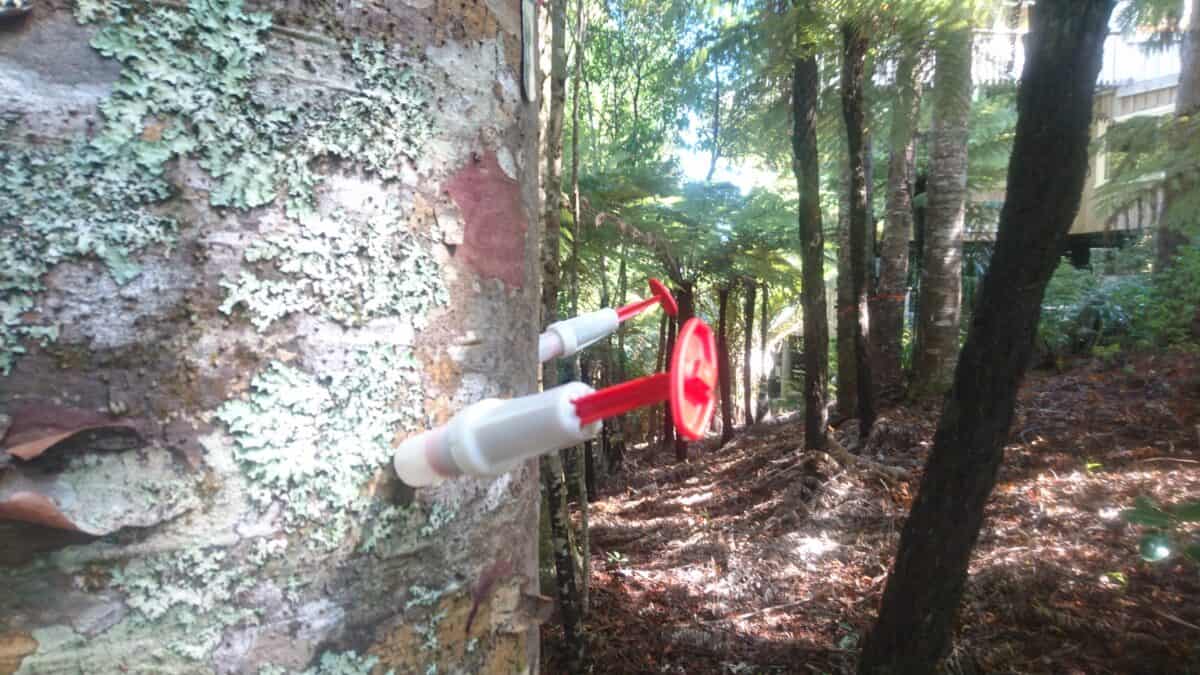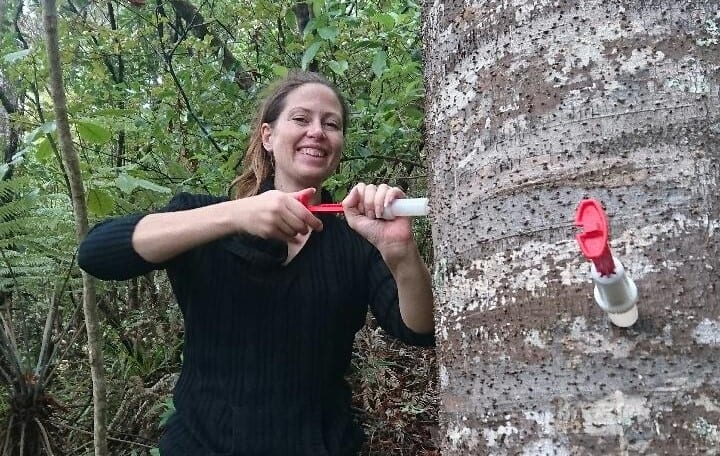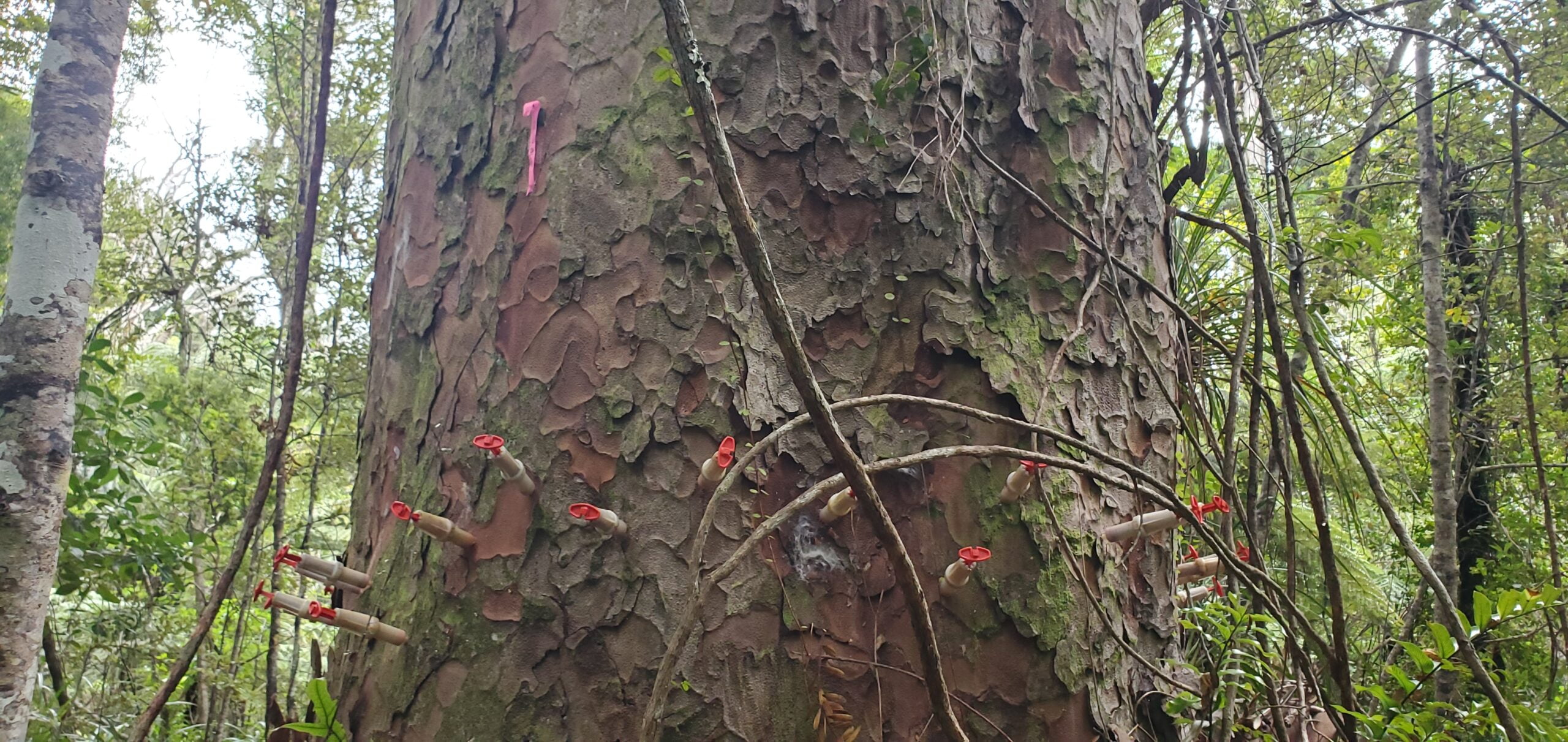Kauri Rescue is a community activation that formed around a successful funding bid in 2016 during Tranche 1 of the BioHeritage National Science Challenge. Tiaki mō Kauri: Community Control of Kauri Dieback, which became Kauri Rescue, was started to treat diseased kauri on private land. Kauri Rescue was able to continue beyond the end of the Tranche 1 funding via support from Auckland Council and Tiakina Kauri.
Ngā Rākau Taketake funded Kauri Rescue to collect meaningful data on the effectiveness of using different concentrations and doses of phosphite to reduce symptoms of kauri dieback. The project monitored a cohort of 500-1,000 trees over a three-year period. Monitoring was conducted by trained researchers and by citizen scientists – landowners who were empowered by the Kauri Rescue team to treat trees and monitor kauri dieback on their own land.
“The hard-working Kauri Rescue team were nothing short of brilliant,” shared John and Sarah, landowners near Muriwai. “They trained us to correctly identify, treat and monitor our ailing trees and provided all the equipment needed.”
Another landowner, Tammy, with kauri on her property said, “I was shocked by the diagnosis and was extremely worried. But the Kauri Rescue team provided me with all the facts and a potential way to help reduce the symptoms in my trees. There were no promises, but my trees were going to become participants in research into kauri die-back to help themselves and other trees that shared their diagnosis.”
Analyses of data collected by researchers and landowners yielded several interesting findings. First and foremost, the project successfully developed assessment criteria that yielded no meaningful differences between expert assessments and citizen assessments of dieback symptoms. This supports the continued use of landowners as citizen scientists for monitoring kauri going forward and highlights the importance of revising citizen science surveys so they gather meaningful data and are easy to use.

While the results are still preliminary, it appears that the concentration of phosphite used mattered less than the number of injections (or dose) per tree: trees that received higher doses appear to have a longer duration of protection regardless of the concentration used compared to trees that were given a lower dose.

Certain biases have emerged in the data. For example, landowners were given the agency to decide between a high and a low phosphite concentration, and they were able to decide the dose delivered to individual trees. Landowner agency is important and is integral to Kauri Rescue’s ethos. However, it did mean that trees with more symptoms were generally given higher concentrations and a greater number of injections (a stronger dose) than healthy-looking trees.
This bias means that there is an inconsistent number of trees representing each concentration level and dose across the tree sizes and symptom severity.
Nevertheless, the data is expected to be useful for optimising phosphite concentration and dose for treatments and determining how long protection might last.
Perhaps most importantly, the community has been empowered to participate in meaningful data collection, practical science and ultimately save more trees.
“We have a sense of pride and satisfaction that we have, in most cases, helped to halt and reverse the die-back,” shared John and Sarah. “For we are not owners but guardians of our trees and feel that, like them, we can ‘stand tall’.”
Tammy echoed their sentiment. “I am so grateful to Kauri Rescue for empowering me to help my trees and for giving me hope and the comfort that I am doing all I can for them.”

Jenny Leonard
